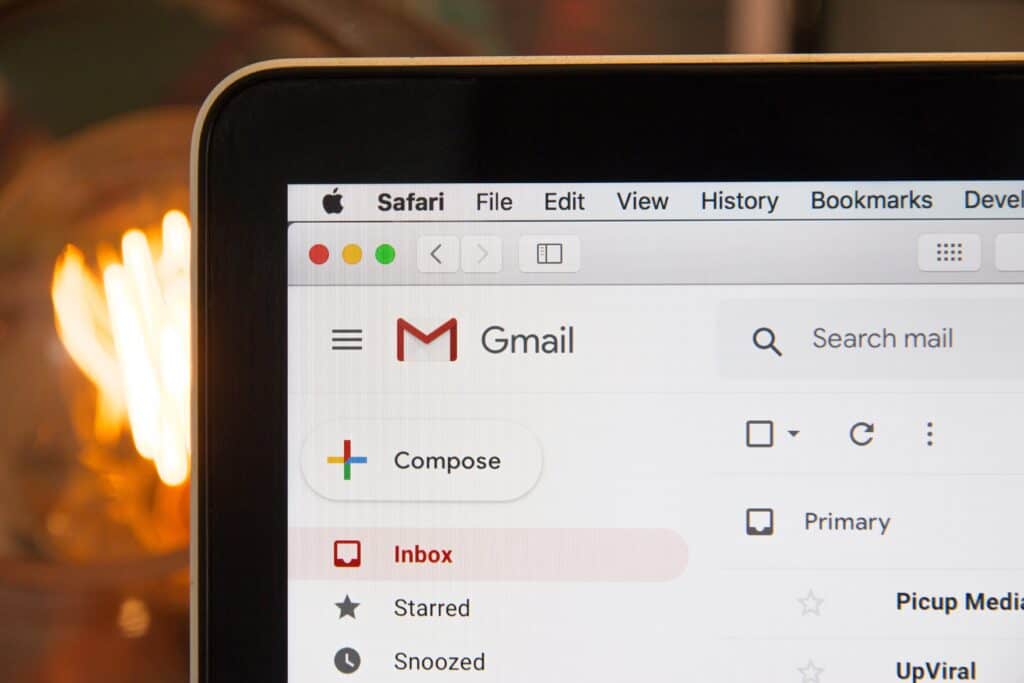While I worked with many small business owners over the last decade, I could divide most of the business owners into two camps. First, those who had a very intuitive understanding of their target market and target customers, and second those who struggled to establish who their target customers were.
Having a clear understanding of who your target customer defines how you as the business owner will deploy resources. Once you know who your target customers are, you have the highest probability of attracting customers to your small business.
There are a lot of ways to identify who your target customers are, starting with surveys, appointing consultants, looking at your competitors and getting your hands dirty by meeting potential customers and conducting experiments to see what works.
What ever you do as a business, you will have understand a few basic things before we go deep into how you as a business owner can tap into these techniques.
As a business owner, you will first have to understand what is a target market, what are the factors you need to consider in a target market and how you can find a target market for your business. You will also have to look at what is a target audience, and how you can start building your audience as a business owner.
Once you have this sorted, it can drive your lead generation strategy as well as help you build an effective sales funnel.
What is a target market? Target market meaning for a business.

A target market is a specific group of customers or businesses most likely to buy a company’s products or services. This group is defined based on various parameters like demographics of the buyer (age, gender, income, education), geographic location, preferences (lifestyle, values, attitudes), and buying behaviour.
Now there are some components of a target market which requires a bit of math effort from the business owners end to make sure that your business is a viable business. These areas basically inform the business owner if the target market is actually big enough for the business to exist and to satisfy the growth aspirations that the business owner might have.
Total Addressable market (TAM) is the size of the market in terms of maximum revenue that you can generate if you were to capture 100% of the customers in the market. Knowing your TAM gives you an indication of the competitiveness of the market. The larger the TAM, the more the number of companies who want a slice of it.
As a business owner, you should be aware of how big a market are you really playing in and anticipate for disruptions to your local business from regional and national players.
Serviceable Addressable Market (SAM) is that portion of the TAM which you as a business owner can realistically tackle. This is a subset of the TAM, where your business, with its current resources can put up a fight with other competitors. A SAM is basically a TAM with a lot of self imposed restrictions for your business.
Knowing your SAM is crucial to the success of your business, since you will have a clear understanding of who your customers are not which helps you eliminate wasteful spending.
Serviceable Obtainable Market (SOM) is the realistic portion of the SAM that you should capture. It is the market share that your company captures within the SAM to keep it growing at a sustainable pace of growth.
Lets look a some examples to understand this better.
Example of a Target market – A Business to business target market example

There are multiple examples of consumer business target markets out there, so lets take a slightly nuanced business to business case to understand the target market better.
I will take an example of a product where I personally ran a product-market-fit sprint along with the leadership team and many small business owners. This was for a SaaS based product, where we worked on an enhancement for the existing product to increase revenue.
Our TAM was all service oriented small businesses in the united states that had less than 20 employees. The maximum potential for revenue at the time we did the sprint from this market was approximately $12.5 billion and number of small businesses that fell into this ambit was about 500,000 small businesses.
Our SAM on the other hand was restricted to just 35,000 small businesses of a specific Industry and all of those small businesses were located either in California or the state of Washington. This reduced the maximum potential for revenue to about $8.75 million from the enhancement.
From the go-to-market resources available for us at the time, we had projected a market share of about 25%, which meant targeting acquiring approximately 9000 small businesses as customers over a span of 3 years, which could give us a revenue of $2.25 million.
In order to achieve this revenue, we had a budget of $0.45 million over the course of the three years to carry out specific marketing, content creation, sales incentives and sponsorships. We had to get this granular to sharpshoot and create a business plan in our proposal.
You will notice here that the return on investment is more like 4 to 5 times the costs we expected to incur. Such an ROI can produce sustainable business growth over the long term while we expand to other cities.
Hope this gave you an understanding of the target market and the math that needs to go into this
A small business’s ideal approach to finding a target market

This is a technique I learnt while leading go-to-market strategy at Intuit while we developed products for small business owners. The difference in this approach to the traditional top down target market exercise is that here we start with the customer pain point.
Now as a business owner, you have a product or service that solves a specific customer pain point.
Go deep into this pain point and ask the following questions
- What is the exact pain that my product or service is solving for the customer – It can be anything among saving time, cost, reducing errors, increasing revenue or improving productivity
- How big is this pain point for the customer? – Choose the customer for whom this pain point is the highest. For example, managing case documents might be a much bigger pain point for a lawyer versus a notary.
- Does the solution your provide solve the problem really well for the customer for whom the pain is the highest? – It should have a 10X impact for this customer than the current solution
- Do you have access to a large number of such customers where your solution and the customer’s pain are a perfect marriage?
The above 4 points are extremely simple to articulate. They are extremely hard to implement.
As a company, you will have to spend time with potential customers to tease out the nuances of pain points to arrive at your “ideal customer”. Once you have found out who your ideal customer is, the next steps are to locate all of them and evaluate the best possible manner in which you can reach them.
This is where an audience building effort comes into play. A target audience is very different from a target market, though the terms are used interchangeably by marketeers.
What is a target audience?

A target audience is typically a group of your ideal customers. A target audience is an audience to whom you will direct all your marketing communication to. The target audience is identified based on the objectives of a specific marketing initiative and can be narrower than the target market.
For example, within the target market of health-conscious individuals aged 20-40, a target audience for a particular campaign might be women in their 30s who are interested in yoga and pilates. You will end up messaging women in 30s for yoga very differently than if you were to generalise the message for health-conscious 20-40 year olds.
Identifying the right audience within your target market
This is where things can get tricky for a small business. Since you have limited resources as a small company, you will have to make sure that all your communication is targeted towards relevant individuals or to relevant decision makers within businesses if you are a business to business company.
Here are some things that you can do to make sure that you have the right audience within your target market.
- Create your ideal customer or buyer persona based on pain points discussed above
- Look at the communication channels they have access to in their daily and professional lives
- Segment these personas and create data driven differentiators
- Test the hypothesis of these personas, communication channels and pain points by meeting a few prospective cutomers
- Refine your approach based on the learning you gain from these interactions
- Add a layer of data from research in your industry and using past customer data where relevant
- Lastly, look at what your competitors are doing, its easy to monitor this in the digital space since every campaign is visible
Once you have gone through the above steps, you will have a better understanding of who is your target audience and what channels work to reach out to them.
Choosing the target customer within your market using customer data

Many business owners already have a running business with actual paying customers who are a source of a goldmine of data. Make sure that your business stays compliant with all laws and regulations with respect to data privacy.
From the data, that you have, here are a list of activities you need to do that will help you identify the target customer from your market with data from existing customers.
- Ensure you collect consumer data, be it leads or sales, capture as many data points as possible
- Look for common traits in demographics, income levels, location, industry and sector
- Group customers with similar preferences and interests
- Create personas for each of these groups that get subdivided based on common traits – You should have a sets and sub-sets of customers now that you have applied multiple filters
- To this seb sets, look at which have the highest revenue and repeat usage and engagement level
- Build tiers of these from the data, prioritise highest to lowest
- Look at where your highest priority tiers are in your outreach program
- Double down on initiatives which target these specific sub sets of customers for new customer acquisition
As you build a process to refine these steps, continuously monitor the impact this has on your sales and customer experience and make adjustments.
Marketing tactics for a business to reach customers in their target market
There are many marketing tactics that small businesses can use to reach customers in their target market. Most of these are focussed towards prioritising the marketing initiatives that can give best return on investment, drive the best conversions and overall prove to have a better RoI.
Use multi-channel engagement to promote your product to the customer base in your target market

Making use of multiple marketing channels is the key to engage and build an audience targeting the customer base in your target market. Some of the channels that small businesses should look at adopting are
- Content marketing to expand organic footprint on the internet
- Influencer marketing to tap into the existing audience of an influence that matches your target audience
- Referral marketing to bring the same audience to you through like minded sources
- Loyalty programs and events for networking with the target audience
- Email marketing and direct mail to make sure you engage with consumers who provide you this valuable data
- Test out pay-per-click advertising if you have a budget to experiment to find out the kind of audience that works for you. Use learning from this to tweak your communications plan.
There are also some of the other tactics i have covered from a marketing perspective where a small business can generate leads for free.
Think about what kind of data will help you sell better to your customers
In today’s age of data and analytics, use data to solve a lot of yesterday’s ambiguous problems. As a business owner, you will have to look at the data you want to collect which will help you create customised communications to your target customer and sell better and increase conversions.
Here are some of the data points i will recommend you collect about your customers to help you do this effectively
- Demographic data (age, gender, income level, location)
- Educational qualifications
- Interests & passions
- Active hobbies that they pursue
- Life stage they are in (singe, married, parents, separated etc)
- Their preferences (vegan, queer etc)
Once you start adding these data points, you will be able to analyse them on many fronts. This will help you create multiple micro segments of customers using which you can tailor customised communication for each micro segment.
Using customer demographic data in your target market to identify sub segments

This is a strategy in itself in many large companies and businesses. As a small business owner, you many not be able to execute this at all levels. You should pick and choose what works well for you. Broadly, once you have a data collection mechanism set up, you need to do the following.
- Analyse trends for each demographic segment you have identified
- Segment these trends based on patterns, link them to other non-demographic data
- Create customised micro segments by merging demographics and preferences
- Evaluate the size of each segment and prioritise the ones that matter to you
- Tailor specific communication campaigns for the prioritised micro segments (the message, the tone, the examples will all be different for each micro segment)
- Run the marketing campaigns on your customer based and track customer engagement for each of these
- Test and refine over time
This needs a methodical approach and it can be made to happen faster where the business owner has existing customer relationships. Test quickly, find out what works through experiments and scale it to your entire customer base.
Different levels of target marketing

To make what we have covered so far relevant, every business owner needs to know the different levels of target marketing. Each level has a different purpose and each business should only choose what makes sense for its needs.
Broadly speaking, the different levels of targeting can be listed as below
- Mass marketing for commoditised products or extremely large brands
- Segmented marketing for specific segments
- Niche marketing, mostly useful for small businesses where your target customer and target demographic is specific
- Micro marketing, suited for local businesses, where customer profile is localised and customer relationships matter
Each level requires a different kind of communication channel and extent of resources needed and the business owner should take a call on what works best for his or her company.
Businesses need to have a targeted marketing campaign to their existing customers to keep track of customer preferences

At the end, every business which can successfully build a strategy to build a targeted communication and marketing campaign for specific customer profiles is bound to see success with respect to increase in sales and revenue and overall growth.
Targeted marketing campaigns also allow for businesses to keep track of customer preferences. Each campaign results will inform the business on what to change or keep depending on the level of customer engagement that each campaign is able to drive.
